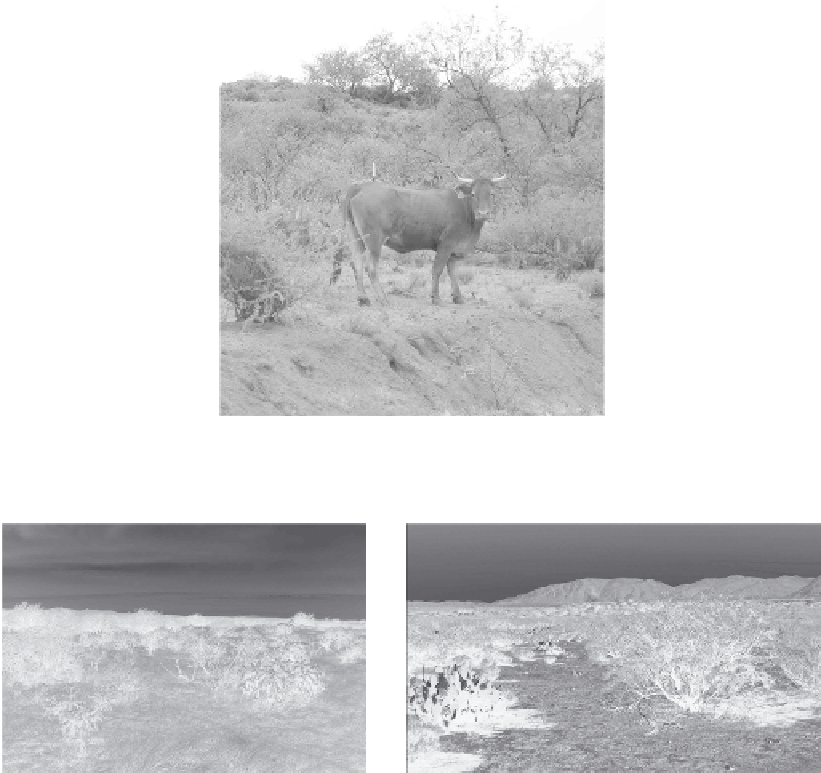Environmental Engineering Reference
In-Depth Information
FIGURE 9.5
Cattle have greatly altered the desert, grassland, woodland, and even forest biomes of the western United States.
(a)
(b)
FIGURE 9.6
Overgrazing by cattle has led to conversion of semidesert grassland biomes to scrublands dominated by cacti
((a) from north of Tucson, Pinal Co., Arizona, June 2009) and mesquite ((b) from west of Rye, Gila Co., Arizona,
June 2009).
represent a profound source of habitat alteration, especially prevalent in arid regions.
30
Even if water continues to flow in a river after the construction of a dam, altered flow
characteristics and water temperature can significantly modify the habitat for wildlife,
especially fish and birds historically associated with riparian and other aquatic
communities. Additionally, livestock directly and dramatically influence these fragile
riparian systems.
31
Grazing can increase soil compaction, change streambank stability, and
enhance establishment of non-native plants in grasslands when coupled with prescribed
burns in the presence of non-native plant seedbanks.
32
Livestock can compete directly with
wildlife for limited resources such as forage or physically interfere with habitat use.
33,34
Effects of competition are more pronounced if wildlife species competing with grazers are
specialists, have small home range sizes and dispersal distances, or rely on habitat features
such as forage biomass that are limiting when grazers are present.
35
Removing cattle from

Search WWH ::

Custom Search